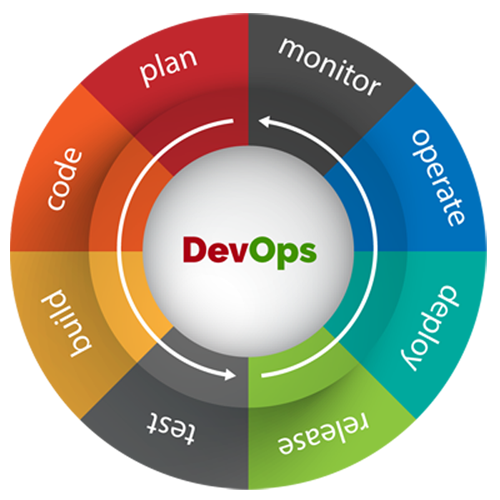Introduction:
As more organizations start to adopt containerization, Kubernetes is quickly becoming the go-to solution for managing containers at scale. While managed services like Amazon EKS, Google GKE, and Azure AKS make Kubernetes deployments easier, many businesses prefer to deploy Kubernetes on-premises so they can retain full control over their infrastructure and data. In this blog, we’ll take you through the steps of setting up an on-prf
Why Deploy Kubernetes On-Prem?
Before diving into the setup, it’s good to understand why deploying Kubernetes on-prem might be a better choice for your organization:
- Data Security & Compliance: Many industries, especially those dealing with sensitive data, have to follow strict regulations. On-prem Kubernetes clusters give you full control over data and help ensure compliance with regulatory requirements.
- Customization: On-premises deployments allow you to configure your environment to meet specific business needs. You won’t be limited by the constraints of managed cloud services.
- Cost Control: For larger, long-term deployments, managing your infrastructure can be more cost-effective than depending on cloud providers, especially when you factor in recurring expenses.
- Reduced Latency: Keeping data and compute resources on-prem can significantly reduce latency, which is crucial for applications that require real-time processing.
What is Kubespray?
Kubespray is an open-source tool that simplifies the deployment of Kubernetes clusters. It uses Ansible and Terraform to automate the process, making it easier to scale and manage. Kubespray supports multiple Linux distributions, making it a flexible option for businesses looking to implement an on-prem solution.
Prerequisites:
Before starting, make sure you have the following:
- Ansible: Installed on the control machine.
- Python: Version 2.7 or 3.5+.
- SSH Access: Passwordless SSH access to all nodes.
- Inventory File: A list of all the nodes and their roles in the cluster.
Step-by-Step Guide to Setting Up Kubernetes with Kubespray:
Here’s how to set up your on-prem Kubernetes cluster using Kubespray:
Step 1: Clone the Kubespray Repository
Start by cloning the Kubespray repository from GitHub:
bashCopy codegit clone https://github.com/kubernetes-sigs/kubespray.git
cd kubespray
Step 2: Install Dependencies
Kubespray has a few dependencies that need to be installed. You can use pip to install them:
bashCopy codepip install -r requirements.txt
Step 3: Set Up the Inventory File
Kubespray uses an inventory file to define the nodes in your Kubernetes cluster. You can generate a sample inventory file by running:
bashCopy codecp -r inventory/sample inventory/mycluster
Edit the inventory/mycluster/inventory.ini file to match your environment. Here’s an example configuration:
iniCopy code[all]
node1 ansible_host=192.168.0.1
node2 ansible_host=192.168.0.2
node3 ansible_host=192.168.0.3
[kube-master]
node1
[kube-node]
node2
node3
[etcd]
node1
node2
node3
[k8s-cluster:children]
kube-master
kube-node
Step 4: Configure Ansible
Ensure Ansible can connect to your nodes by configuring SSH key-based authentication. You can test the connection by running:
bashCopy codeansible -i inventory/mycluster/inventory.ini all -m ping
Step 5: Deploy Kubernetes
Once everything is set up, you can deploy your Kubernetes cluster using the following command:
bashCopy codeansible-playbook -i inventory/mycluster/inventory.ini cluster.yml
This process may take some time, as Kubespray sets up all necessary components.
Post-Deployment Configuration:
After the deployment is done, you’ll need to configure kubectl to interact with your Kubernetes cluster. Copy the kubeconfig file from the master node to your local machine:
bashCopy codescp user@node1:~/.kube/config ~/.kube/config
Verify that your cluster is working properly by running:
bashCopy codekubectl get nodes
Why Use Kubespray for On-Prem Kubernetes?
Kubespray offers several benefits for organizations deploying Kubernetes on-prem:
- Automated Setup: Kubespray takes care of many of the complex, manual tasks involved in setting up a Kubernetes cluster, reducing the chances for human error.
- Flexibility: It supports a wide range of Linux distributions, making it adaptable to various on-prem environments.
- Scalability: Adding or removing nodes is straightforward, allowing your cluster to scale as your needs evolve.
- Community-Driven: Kubespray is open-source and maintained by a large community of developers, ensuring continuous updates and support.
Addressing Key Challenges with On-Prem Kubernetes
Deploying Kubernetes on-prem with Kubespray helps solve several common challenges:
- Vendor Lock-In: Running Kubernetes on-premises frees you from dependency on cloud providers, giving you full control over your infrastructure.
- Compliance: Keeping sensitive data on-premises helps meet strict regulatory and compliance requirements.
- Cost Savings: For large-scale operations, managing your infrastructure can be more cost-effective than relying on managed cloud services.
- Custom Networking: On-prem setups allow for advanced, customized network configurations that may be required for certain applications.
- Data Sovereignty: With an on-prem setup, you have control over where your data is stored and how it’s processed, ensuring compliance with local data laws.
Deploying Kubernetes on-premises using Kubespray provides a powerful, flexible solution for organizations looking to take control of their infrastructure. Whether you’re concerned with data security, compliance, or cost management, Kubespray makes it easier to leverage the full potential of Kubernetes. By following the steps in this guide, you’ll be able to set up a reliable Kubernetes cluster that meets your organization’s specific needs.
About Euphoric Thought Technologies:
Euphoric is an IT firm providing end-to-end product development services with its deep technical expertise and industry experience. The offerings include DevOps, Cloud Computing, Application Development, Data Science and Analytics, AI/ML, and ServiceNow consulting. You can contact us here to learn more about Euphoric. Reach out here to connect with the team.







